Japan Folklore: Kitsune
Kitsune (狐)

The fox that always comes back
Kitsune. Clever, sly, with a beautiful fur the color of the Autumn leaves, a thick tail and a lovely face that makes them look like they are smiling. Foxes are in many cultures associated with slyness, but in Japan they have something more. In fact they have something magical and mysterious.
In the Japanese Folklore the kistunes are spirits in possession of great powers. They have fire breathing, they can create lightnings and can also enter people’s dreams. They can have a really long life and their powers grow stronger as they grow older, and so do their tails, that go from one, to two, three, up to nine of them. Their fur changes to become white (or sometimes gold), but according to some legends it can also be black.
The Powers
The kitsunes are famous for having shape-shifting powers. There are a great number of legends where these creatures take the shape of beautiful and charming women that make the fortunate or unfortunate man fall in love with them. They are ambivalent beings, on one side they are lovable lovers, on the other side they are mischievous creatures. In fact, there are different types of kitsunes.
The Zenko Kitsune (善狐 “good foxes”) are the foxes that follow Inari, the Shinto deity of agriculture, harvest, rise and fertility. They are benevolent spirits and meeting one of them can only bring good news. On the contrary, the Yako Kistune (野狐 “foxes of the fields”, o nogitsune) are mischievous and even evil. In contrast with the Zenko Kitsune, the Yako bring misfortune with their powers and can even posses people. The unlucky men that fall for their tricks are called Yako-tsuki and this possession makes them look they are lunatic. In the past it was said that people were possessed by these evil entities in order to find a justification for many mental illnesses. Sometimes the encounter with one of these spirits could bring to death.
They are not only intelligent but also wise. This wisdom increases with time, like their powers do, until they become omniscient. They know everything about this world, they know the past and what will happen in the future.
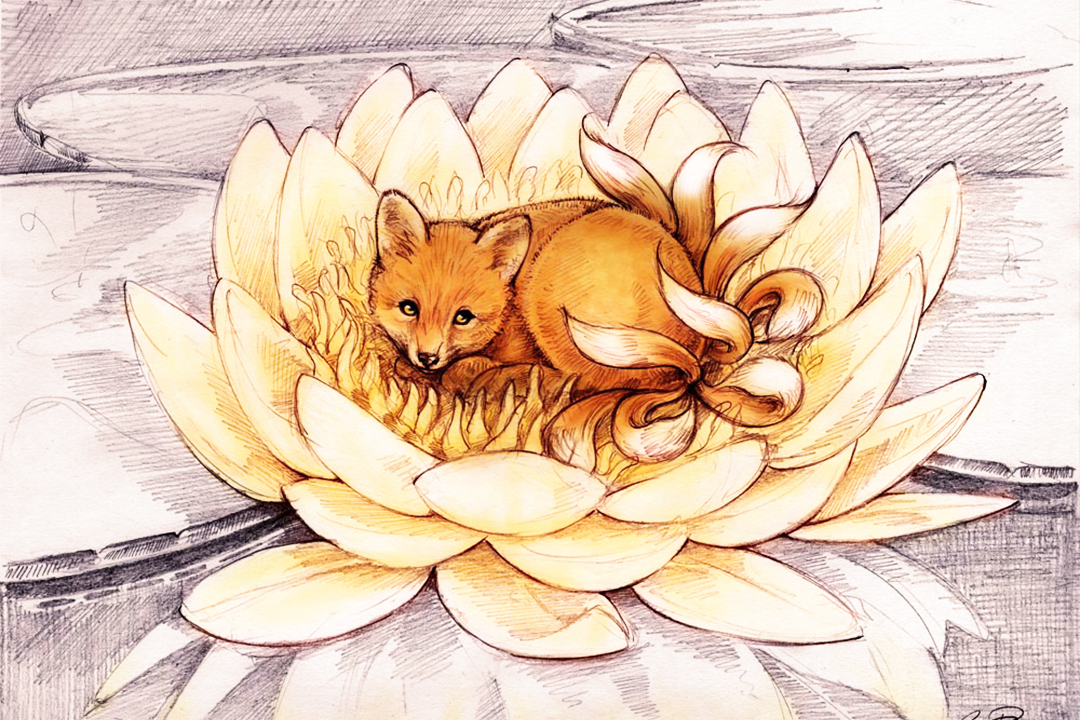
As the tale goes
The world Kitsune does not literally mean ‘Fox’. Kitsu was the word used to indicate the sound emitted by these animals. In ancient Japanese, Kitsu-ne meant “that comes back and sleeps”, or it could also be read as ki-tsune, “that always comes back” The explanation for these interpretations can be give by one of the many legends about these spirits.
The most ancient one goes like this:
«Ono, an inhabitant of Mino (says an ancient Japanese legend of A.D. 545), spent the seasons longing for his ideal of female beauty. He met her one evening on a vast moor and married her. Simultaneously with the birth of their son, Ono’s dog was delivered of a pup which as it grew up became more and more hostile to the lady of the moors. She begged her husband to kill it, but he refused. At last one day the dog attacked her so furiously that she lost courage, resumed vulpine shape, leaped over a fence and fled.
“You may be a fox”, Ono called after her, “but you are the mother of my son and I love you. Come back when you please; you will always be welcome”.
So every evening she stole back and slept in his arms.»
(From the tale It comes back and sleeps written by monk Kyoukai in late VIII s. Or in the beginning of IX s.)
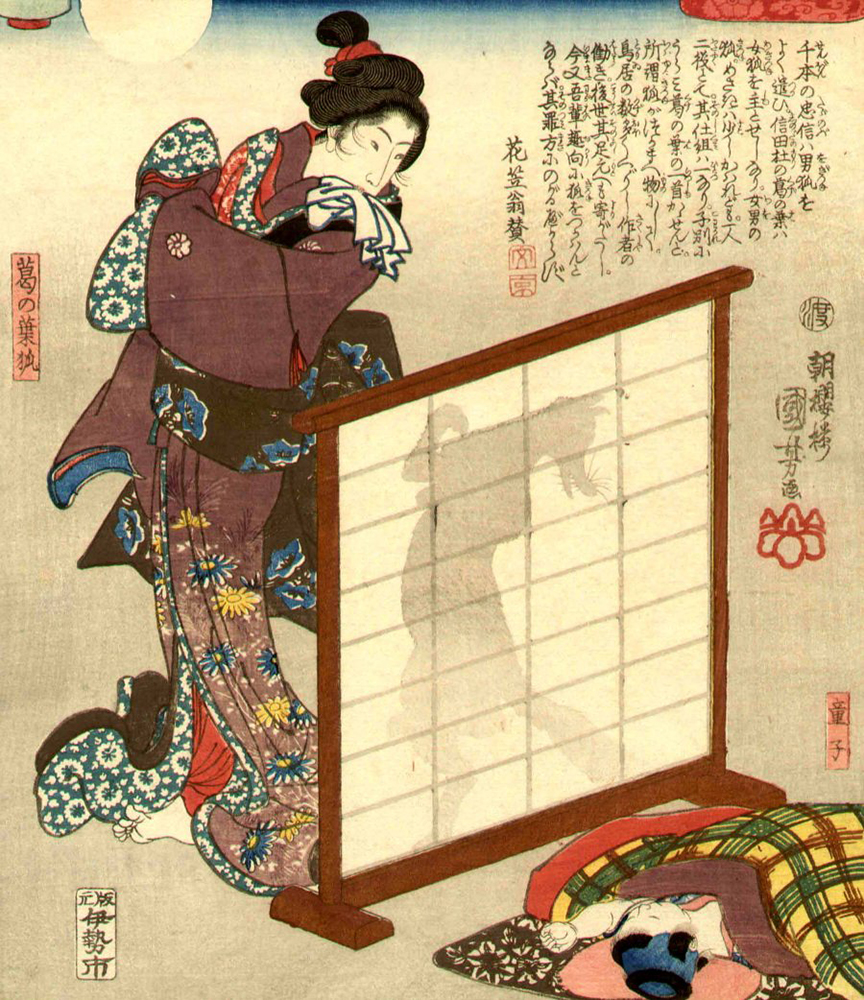
A dualist being
As mentioned, they are shapeshifting spirits and they have the ability to turn without age or sex problems. Their most famous and undoubtedly fascinating figure is that of a beautiful young woman. In fact Kitsune-gao (狐 顔 “fox face”) is a term used to describe feminine features. High cheekbones and fine and narrow eyes, considered to be very sensual. According to tradition it is believed that seeing a beautiful woman wandering aimlessly during sunset hours it could actually be a fox.
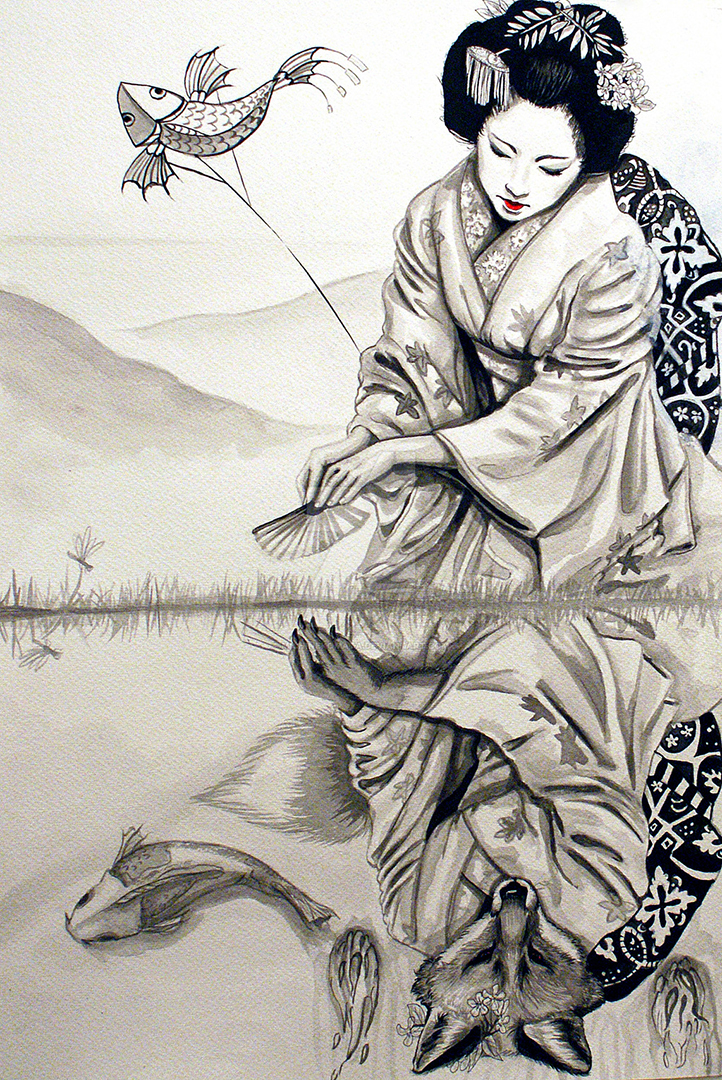
In order to discover their true nature we must find the tail as the Kitsune can not disguise it. Alternatively, you should be loyal people but also their dislike for dogs can be a signal. Loyal animals can perceive their true being. Sometimes in their malignant form, the Kitsune draw strength and power from her lover. They absorb their energies through sexual intercourse and dry up the human forces and gruesomely causing death.
There are several shrines dedicated to Inari, their protector. It’s usual to find depictions of these animals around the temples. The most well known is the Fushimi Inari Taisha shrine dedicated to the gods located in Kyoto. Also present in Buddhism, we find Dakini, Inari’s female alter ego, as she rides a white fox, brandishing a sword. In these temples, the faithful are used to leave offerings of food for them, udon, soba, sushi and preferably the Aburaage fried tofu which is said to be Kitzune’s favourites.
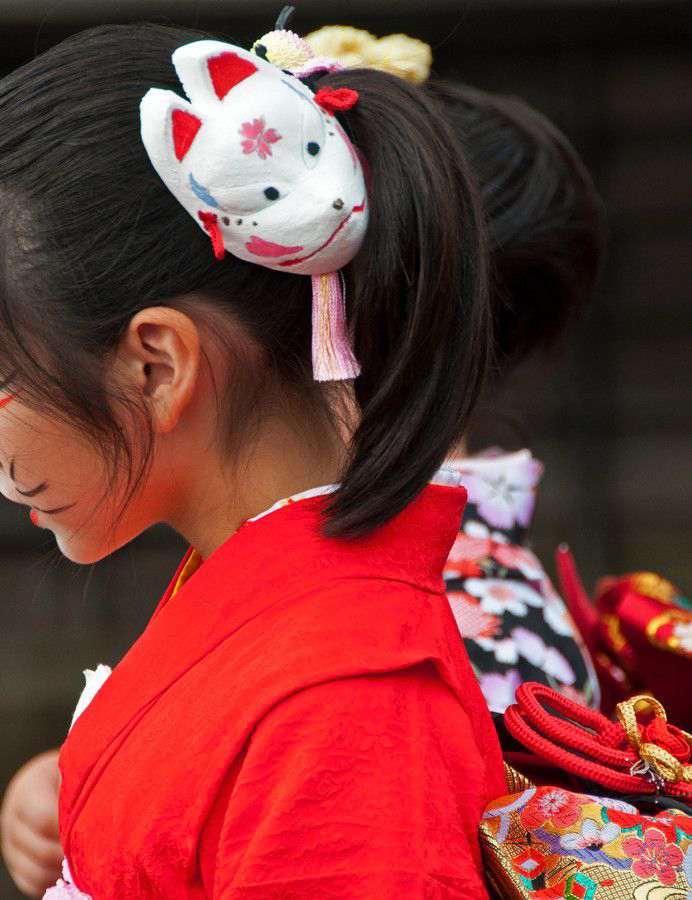
From the tradition to the animation
They are undoubtedly loved creatures in Japan. They are on traditional masks used in theatrical plays, in many variants: Gin-tenko / Silver fox, Kinko/ Golden fox, Hakuko/ the White fox, and many more.
The netsuke are the small statues made in wood or ivory. They are used as coin-purses to decorate kimonos, and are normally seen in popular mangas or anime. The most famous anime of the past few years is Naruto. Here the young ninja Naruto has the spirit of a fox sealed inside his body. This animal can be recognised in his personality, in his physical aspect, and in his powers too. We can find a fox in Inuyasa too. Here Shippo is a small demon fox that always creates funny gags changing his appearance.

Also, in the character of Kurama, from Yū Yū Hakusho, we find a fox spirit that was reborn in the human form of Shuichi Minamino. In this last character it extremely visible the dualistic nature of these spirits. On one side, the good-natured human being, devoted to his mother and loyal to his friends, on the other side, the cruel and unaffected fox spirit.
But these are just a few examples of how kitsunes have influenced the world of the animation. In Shiroichi, in the Tohoku region (north Japan), we can find the Miyagi Zao Fox Village. This is a faunistic park where it is possible to meet these lovely animals in their natural environment. Here you can see how friendly they can be and it’s really easy to take pictures or even interact with them.
Festivals, Parades
Obviously, in a country so in love with traditions like Japan, there are numerous festivals dedicated to foxes too. The Kitsunebi matsuri, ‘The Festival of the Fire Fox’, is celebrated on the forth Saturday of September in the vicinity of the Okura Inari sanctuary of Hida. On this occasion, people create a masked parade, a sort of rappresentation of the so called ‘Marriage of the fox’, to invite good luck. During the New Year celebrations, in Kita (special ward of Tokyo) takes place the parade of the foxes of Ōji. During this event, everyone disguise as foxes and go to the Ōji Inari. This parade is inspired by the legend that tells how foxes all around Japan gather around a tree disguised as humans to celebrate the New Year and then reach the nearby sanctuary.
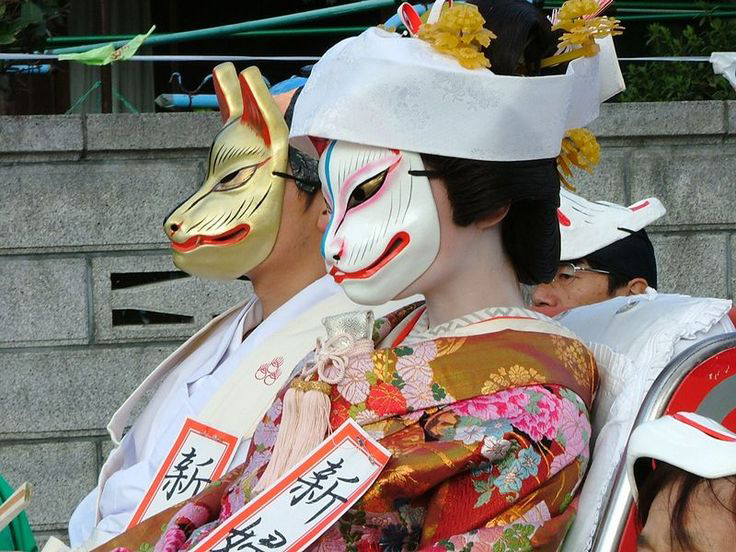
Marriage
We also have the saying Kitsune no Yomeiri (狐の嫁入り “the marriage of the foxes”). During the night foxes gather together, and in a line one behind the other, travel for rivers and mountains with lanterns made of paper to celebrate their marriages. An exception to this legend is Tokushima where it is believed that this is a funeral procession. According to Japanese people, if outside is raining but there is the sun too, then it means that foxes are celebrating a marriage.
This way of thinking changes from area to area. For example, in Ehime it happens when it is snowing, while in Kumamoto when there is the rainbow.
Nonetheless, with this atmospheric phenomenons it’s not so uncommon to see small glittering lights. Those lights are the lanterns of the foxes. When you see something like this, pay attention, you might be able to see the marriage of the foxes!
Photo credits: tokyobling; mangadreams; pinterest; deviantart.
Share this:
- Click to share on Facebook (Opens in new window)
- Click to share on Twitter (Opens in new window)
- Click to share on Tumblr (Opens in new window)
- Click to share on Pinterest (Opens in new window)
- Click to share on Telegram (Opens in new window)
- Click to share on WhatsApp (Opens in new window)
- Click to share on Reddit (Opens in new window)
- Click to print (Opens in new window)






